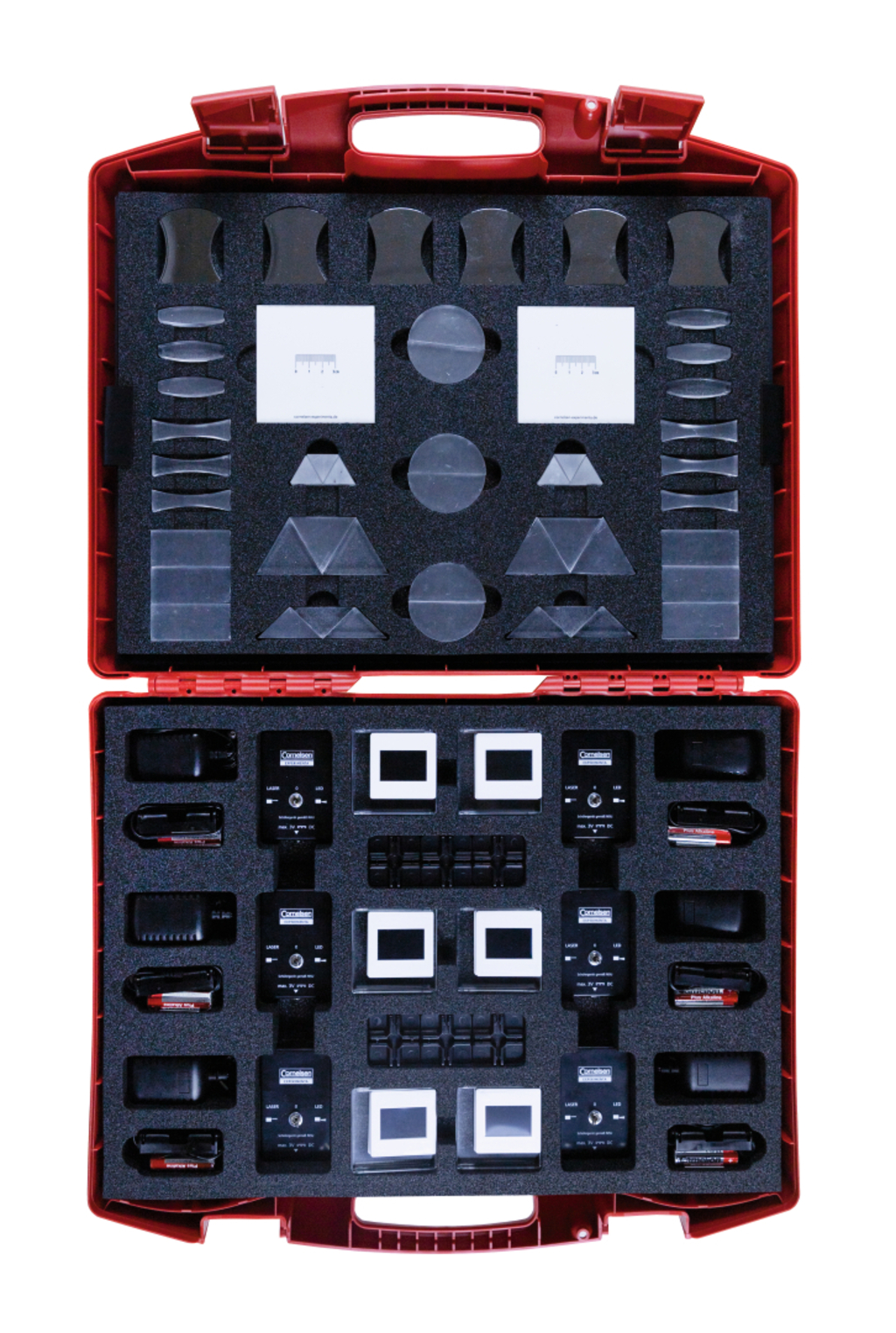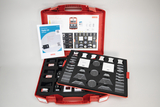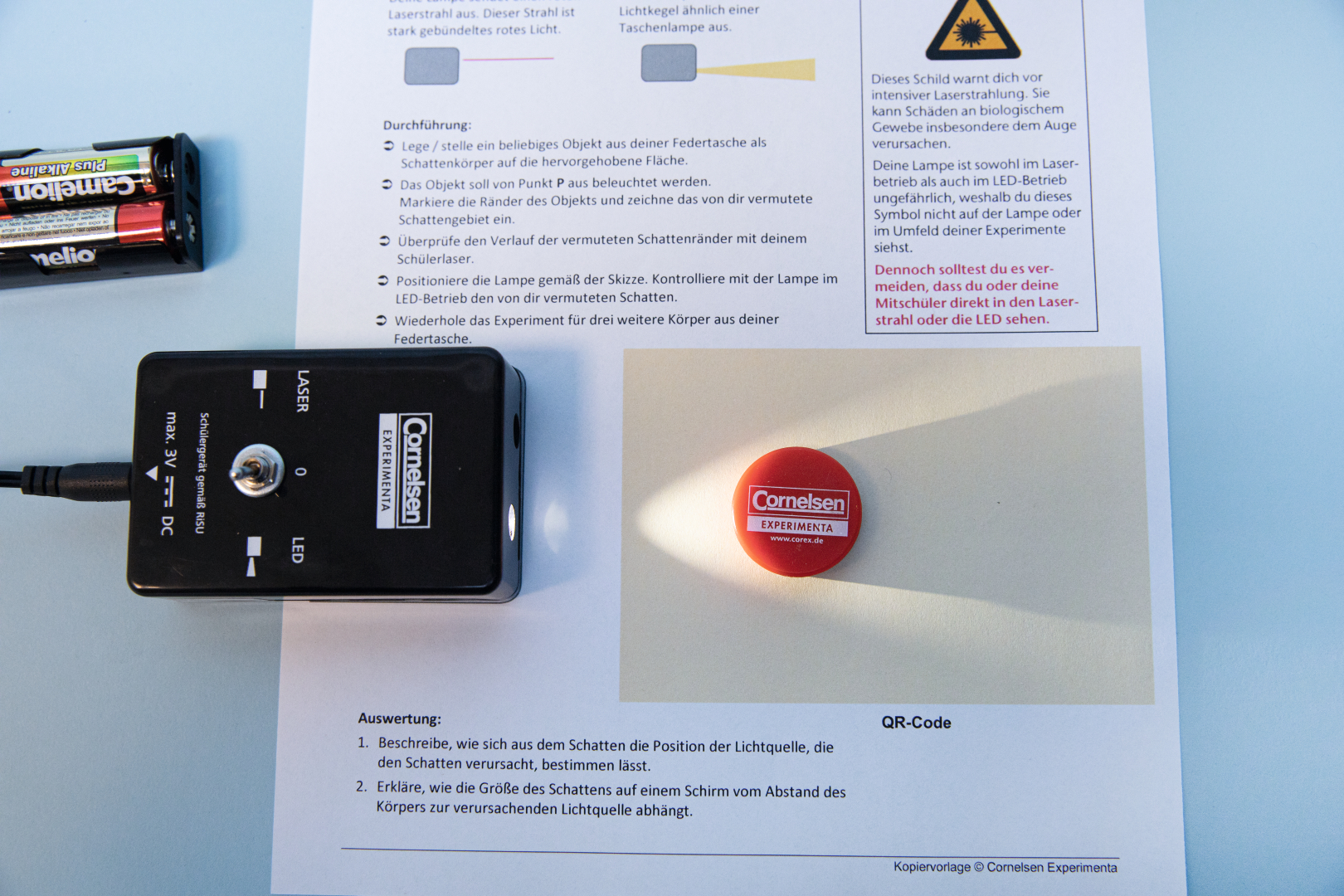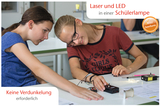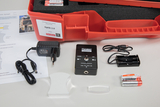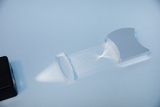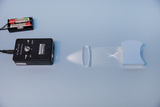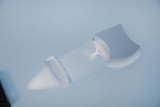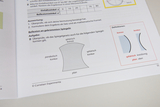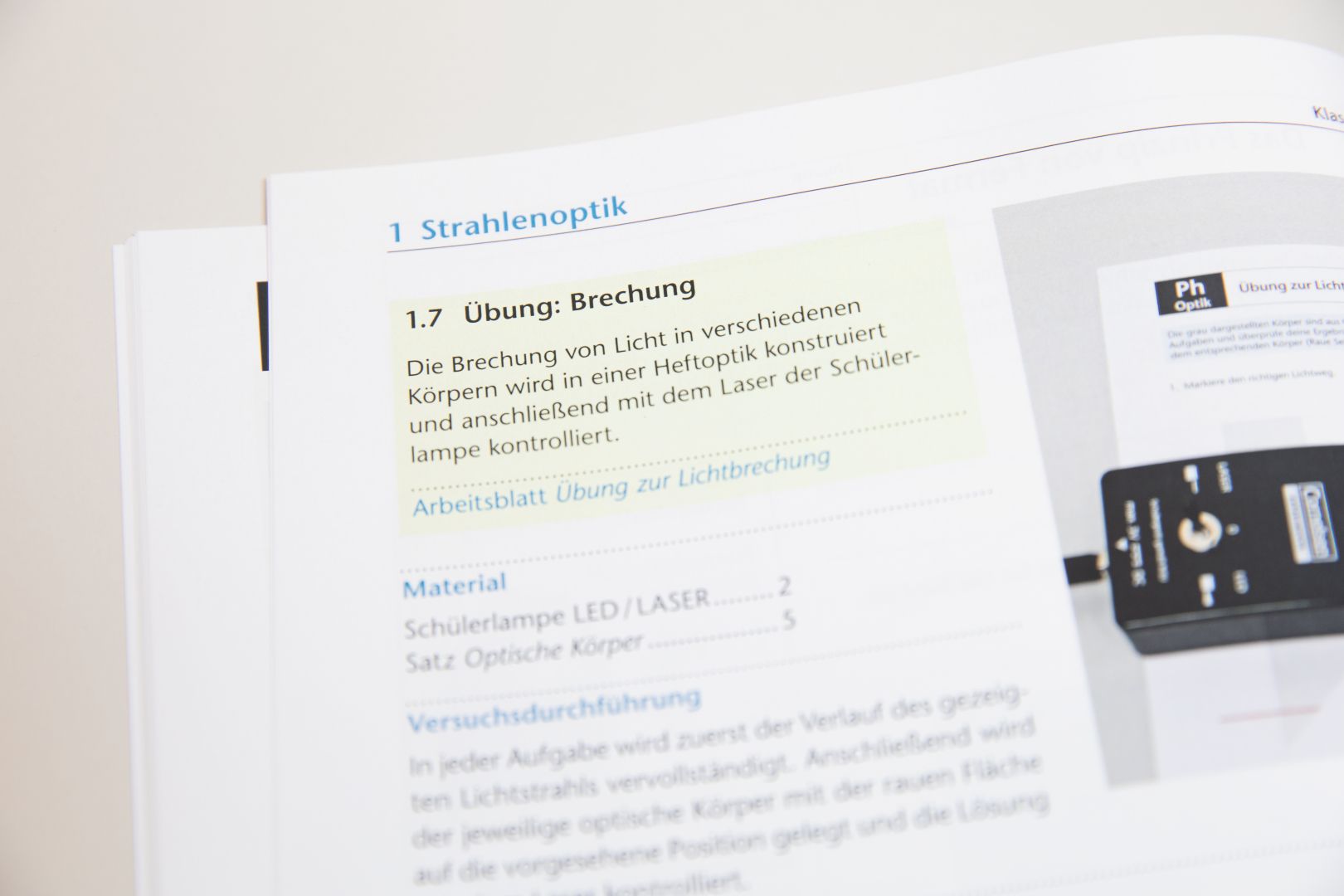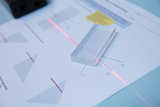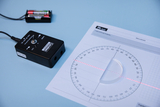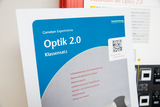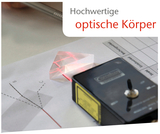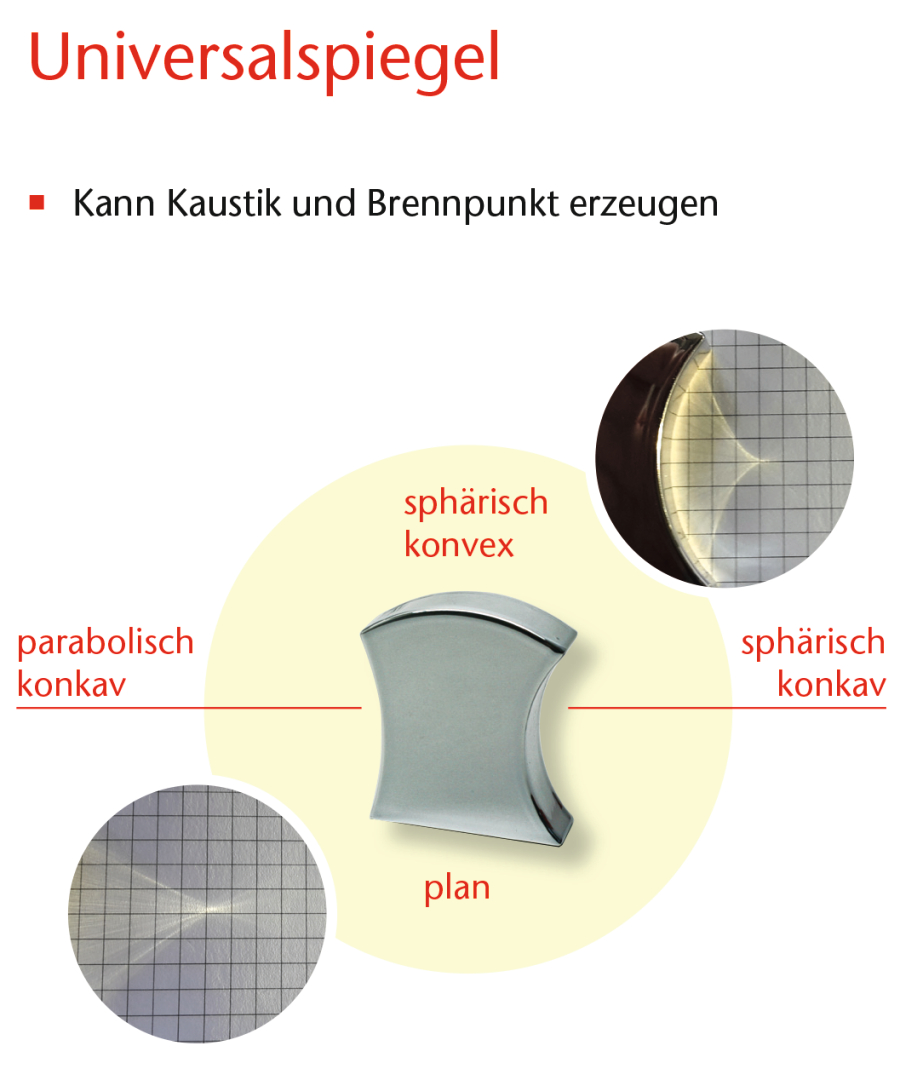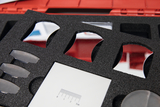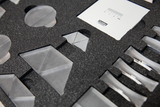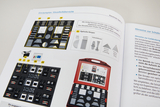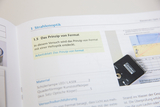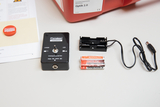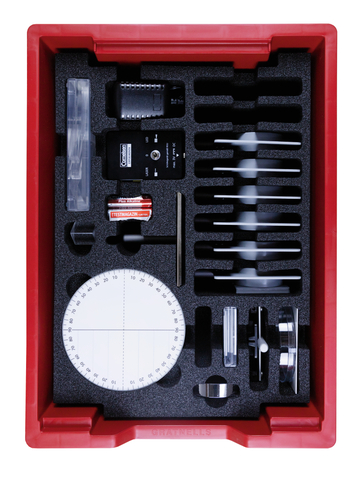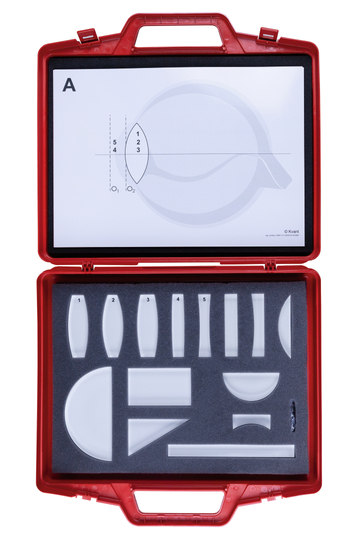Class set Optics 2.0
Thanks to the unique multifunctional student lamp, this class set for six learning groups can be used for free experiments even in rooms that are not darkened. All ray trajectories of geometric optics can be examined directly in the booklet, and the results can be saved afterwards.
Special features
Certified student lamp with laser (class 1) and LED with very low heat generation
High quality optical body with prism for color decomposition
Universal mirrors: parabolic concave, spherical concave, spherical convex, plane
With experiment on Fermat's principle
Completeness verifiable at a glance
In the accompanying material
Each experiment with material list, 3D instructions, implementation instructions, evaluation and tips
Measurement sheet with angle scale enables direct measurement of angle of incidence and angle of reflection
With the laser and the LED of the student lamp as well as the associated worksheet, the formation of shadows as a stitching optics is investigated.
The law of reflection is discovered with the laser of the student lamp on the measuring table.
The reflection of a parallel beam of light is reflected convex spherically, concavely spherically and concave parabolically on the surfaces. The test is carried out as a stitching optics.
The transition of light from air to glass is investigated. Snellius's law of refraction is discovered and the refractive index of air in glass is determined experimentally.
In this experiment, the principle of Fermat with a stitching optics is discovered.
The refraction of light in different bodies is constructed in a stitching optic and then controlled with the laser of the student lamp.
The beam paths through convex and concave lenses are examined as stitching optics.
In two partial tests, the focal points of a cut-collecting lens with the stitching optics are first determined. The focal point of a lens on the optical bench is then measured.
The light of the LED is broken down into its spectral colors with a prism. The test is carried out as stitching optics.
- 6 × Cross base
- 6 × Screen white with scale 90/90/1 mm
- 1 × Plastic case ca.540x450x150 mm
- 6 × Colour filters, primary red, green, blue
- 6 × Universal mirror
- 6 × Prism, equilateral, 25x25 mm 3x60°
- 6 × Ray optics models, set of 6 pcs.
- 6 × Optical lamp, students type, LED/LASER
- 6 × Batterie holder w.cable
- 3 × Set of 4 Mignon cells, alkaline, 1,5 V
- 6 × Power supply unit, clocked, 3 V/1 A DC
- 1 ×
- 1 ×
- 1 ×
